At over 1000 years old, the Viking Ship Museum, Oslo houses Viking boats and artifacts from the peak of Viking marine engineering. The Viking Age, from 800-1100 AD, was the age of the sleek, speedy longships. Without this crucial advance in ship technology, the Vikings would never have become a dominant force in medieval warfare, politics, and trade. These lightning-speed longships had the strength to survive ocean crossings while in only 20 inches of water! This allowed navigation in very shallow water. It is here at the Viking Ship Museum, Oslo where you will become enamored with the Vikings’ great achievements in history.
Viking Museum Norway, Oslo
The Viking Ship Museum is included in my article about how to spend a magical 48 hours in Oslo, Norway, and what to do in a Norway winter.
Viking Ship Museum, Oslo: What is there?
The Viking Ship Museum houses 3 longships: the Oseberg ship, the Gokstad ship, and the Tune ship. The three Viking longships are in separate rooms in the Oslo Museum with a “balcony”. You can go upstairs to this viewing platform, where you will get a higher and better view of the enormous Viking ships.
It is much better to see them from a higher perspective. While there, you can marvel at the details of the Viking boats and see how well preserved they are. These massive Viking boats are just a few of the things you will see at the Viking Museum in Norway. You will also find many of the artifacts that were found within or near these buried ships.
This statue outside of the Viking Ship Museum, Oslo is in the memorandum to Anne Stine and Helge Ingstad, Norwegian archeologists with the University of Oslo, who discovered the remains of a Viking settlement at L’Anse aux Meadows in Newfoundland in 1960.
Be sure and read: What to do in Oslo
Viking Ship Oseberg History:
The Mother of Norway’s first King, Queen Asa, (mother of Halfdan the Black and grandmother of Harald Fairhair), was buried with her Viking ship. There were also the skeletal remains of her daughter on the longship. It is also speculated that it could have been a slave girl, who was sacrificed to accompany her into the afterlife. Either way, the women were buried with three beautiful sleighs, a carriage decorated with mythical figures, five carved animal heads, and dresses.
The Queen was wearing a very fine red wool dress with a twill pattern. This was a luxury commodity back in the 9th century. She also had a fine white linen veil, multiple combs, and pearls. The younger woman wore a plainer blue wool dress with a wool veil. One of the outfits included silk imported from China. The opulence of the burial site and the goods buried alongside them suggests that this was a burial of very high status. Along with the women, there were also horses, cows, and six dogs in the grave.
My imagination runs wild as I try to envision these brave women aboard the majestic Viking boats with the waves crashing against it from the rough seas in the fjords of Norway. It is hard to believe that they could manage such an enormous creature. Wide-bottomed and massive, the Viking longship must have taken a slew of men to keep this gigantic boat afloat during the horrific storms of these cold seas, especially during a difficult Norway winter.
The Viking Ship Oseberg
It has been determined that the Oseberg Viking longship was a pleasure yacht. It is 70 feet long and 16 feet wide. It had a single square sail and fifteen pairs of oars. The researchers estimate this Viking ship could achieve a speed of up to 10 knots. It was built in the first decades of the ninth century, A.D. (It was determined that the ship dates from before the year 800 and that she was buried since 834). This Viking longship is the world’s most complete Viking ship ever found!
Discovery of the Viking Ship Oseberg
A farmer named Kunt Rom discovered the Viking longship in 1903 while he was digging in a mound on his farm. It was unearthed in 1904 by a Norwegian and a Swedish archaeologist after a 5-month excavation. The Viking boat was very well preserved in a clay pit. It was completely reconstructed and is now the centerpiece of the Viking Museum Norway. It was temporarily stored for years at the University of Oslo. It took conservators twenty-one years to meticulously restore the Viking longship using almost all of the original wood.
You will surely be impressed with the massive size of the Viking longship Oseberg and the amount of original wood they used to help reconstruct it. To get an idea of the size of the ship, be sure to take a look at the size of the people in the two photographs below.
Viking History
Along with the ship, they also have artifacts that were discovered on the ships, which include everything from richly carved. four-wheeled wooden carts to bed-posts, and wooden chests. More mundane items, such as agricultural and household tools were also found. However, the most mysterious and interesting thing found was what they are calling the “Buddha Bucket”.
This unremarkable bucket has two small handles at the base of the bucket, yet are actually small brass figures in the Lotus position! (Like a statue of two Buddhas!) Is it possible that they could have had contact with Asian cultures during this time? Or is it more likely that it is a result of coincidental similar styles? Researchers have not concluded one way or the other as of yet.
The bow of the Viking longship has the most amazingly carved head of a serpent, with the stern of the ship as its tail. It quite literally could have been the sea monsters that people reported to have seen back in the day!
The Viking Ship Museum, Oslo also has two other Viking boats: the Gokstad and the Tune ships.
The Viking Longship Gokstad
Viking longship Gokstad was a large ocean-going trading vessel. It is 76 feet long and 17 feet wide. It had 16 pairs of oars and a single square sail. This Viking longboat looked more seaworthy than the Oseberg. Archaeologists estimate up to seventy people could sail in it. Like the Viking longship Oseberg, it was a burial and contained the remains of an elderly man. It’s almost as well preserved as the Oseberg ship and was made around 890 A.D.
Viking Ship Gokstad Discovery
The Gokstad boys found the Viking Ship Gokstadon on their Gokstad family farm in 1879. The farm is in Sandefjord, Norway, where there was a large burial mound. The two teenage sons were bored one day and they had heard the rumor that there was a Viking boat buried in the mounds, so they began to dig. Sure enough, they were able to uncover some of it.
A year later, an official archeological dig took place. The Viking longboat was actually buried below the ground level in clay. The bow and stern were above the clay and had been destroyed, but otherwise, the Viking longboat was exceptionally well-preserved.
You can marvel at the details of the Viking ships and how well preserved they are ar the Viking Ship Museum. Alongside that, you’ll find artifacts on display. Each of the three rooms they occupy has a “balcony” where you go up the stairs to get a higher view. It is great for looking at them from a higher perspective as mentioned before.
The Viking Longship Tune
The third ship at the Viking Ship Museum, Oslo is the 22-meter fragment of the Tune ship. The incomplete state of this ship reminds me of how remarkable the nearly complete finds of the Oseberg and Gokstad really were. The Tune ship is the lesser-known and in the poorest condition of the three vessels that are on display at the Viking Ship Museum, Oslo.
It was once thought that the Tune was built primarily as a so-called “grave ship” for an important Viking. But since the Viking ship has both ruts and signs of wear and tear under the keel, it is now thought that it was actually used as a seafaring vessel. It is now believed that the Tune ship was a fast-sailing courier ship along the coast since it was equipped with unusually strong rigging for such a small Viking boat that was built for 12 oarsmen.
The Viking Longship Tune Discovery
The Tune was discovered on the Haugen Farm, north of Fredrikstad, in a town known as Tune, Norway. It was excavated from a burial mound in 1867. The ship is fragmented but may have been up to 72 ft long x 14.3 ft wide, with 12 pairs of oars. The length of the keel is 46 ft. There was a burial chamber right behind the mast and in it were found the remains of a Viking man. Even though the grave was plundered before its excavation, research has revealed remains of burial gifts: a horse’s skeleton, parts of a ski, and a sword handle.
Architecture style: How to Build a Viking Longship:
Both the Oseberg and the Gokstad were built using the clinker method, rather than the more conventional technique of first building an inner skeleton for the hull. The clinker method is where the oak planks overlap and give the Viking longships their shape. This was the secret of the Viking longships their unique construction. A single piece of oak was used to ensure the structural integrity of the keel. It was cut using a broad ax instead of a saw.
An expert Viking wood maker would split the oak tree trunks into long thin planks and then fasten them with iron nails to a single sturdy keel. The length of the keel then determined the dimensions of the rest of the ship. This invention of the keel is one of the key reasons the Vikings maintained naval superiority for 250 years. A keel allowed the ship to be rowed and sailed. This demonstrates how today we can learn plenty about navigation and shipbuilding from them.
Where is the Viking Museum?
How to get to the Viking Ship Museum: Arrival
It is located in Oslo, Norway. The Viking Ship Museum, Oslo is located on a peninsula on the western side of Oslo, Norway called Bydgoy. Upon arrival at the Viking museum, Oslo, you will be awestruck at the massive size of the three ships they have on display. They are displayed in all their grandeur and you will truly enjoy a trip to the Viking Ship Museum. To learn more, go to the website for the museum in Oslo.
BUS: It is served by Oslo Bus 30.
FERRY: In the summer there is also a boat/ferry service. Take Radhuset (City Hall) to Vikingshiphuset.
Viking Ship Museum Ticket Gives You Free Access to the Historical Museum
The Viking Ship Museum, Oslo, and the Historical Museum form the Museum of Cultural History. Here you will find Norway’s largest gold treasures from Viking times, as well as the rest of the Viking collection.
Tickets for the Viking Ship Museum, Oslo are valid for free access to the Historical Museum if used within 48 hours.
To learn more, go to the website for the Historical Museum.
The Viking Museum, Oslo: Opening hours
Open daily
- 1 May – 30 September 09:00 – 18:00
- 1 October – 30 April 10:00 – 16:00
Viking Ship Museum, Oslo: Ticket Prices
Viking Museum, Oslo: Oslo Pass
Should you or shouldn’t you purchase the Oslo Pass? The Oslo Pass gives you free entry to more than 30 museums. Even better than that it also gives you free admittance on all public transport and if you have a car, free parking in municipal car parks. It offers a lot more than that, but you can find more information about it here.
The deal is, you decide whether you want the Oslo Pass card that is valid for 24, 48, or 72 hours. Once you validate it, the pass is valid for the number of hours you chose. The cool thing is that they have an app on your phone that you can use to track it. I will let you decided on whether or not you think it is worth it, as the whole package is outlined on the official page of the Oslo Tourism Board.
Viking Ship Museum, Olso: Nearby Attraction Tips
The Viking Ship Museum, Oslo, and the Norsk Folk Museum are very close together, so go to these on the same day while on the Bygdoy peninsula. You can make a day of it by taking the time to visit the Norwegian Museum of Cultural History known as Norsk Folkemuseum. This place is just as fascinating as visiting the Viking longships and allows you to learn even more about Viking history.
The Norsk Folk Museum (the Norwegian Museum of Cultural History): This is also A MUST for any visit to Oslo. I have to confess that I missed it the first time I was in Oslo. It was absolutely my favorite thing on my itinerary on my second trip to Oslo. This is where I finally got to visit my first Stave Church, something I had been wanting to see for years. Not only does The Norsk Folk Museum house the Stave Church, but it also allows Viking history to come alive as the world’s first open-air museum with over 150 buildings that have been relocated from towns in Norway.
Other Nearby Attractions:
- A short walk away you will also find both the Fram Museum (the polar ship Fram) and the Kon-Tiki Museum. The museum is located about ten minutes walk from the Fram and the Kon-Tiki museums.
Viking Museum, Oslo: More Tips
Go early, as the Viking museum gets pretty packed as the day goes on. There are frequent tourist buses that go here, so plan accordingly. Also, there is free wifi, so no need for this MiFi hotspot while you are at the Viking Ship Museum.
Viking Ship Museum, Oslo: Reviews
Find the latest reviews of the Viking Ship Museum, Oslo on Tripadvisor.

A Viking Queen: Viking Ship Museum, Oslo Photo courtesy of Wikimedia Commons https://commons.wikimedia.org/wiki/File:Oseberg_ship
You may also want to take a tour of Oslo City Highlights:
You can discover the best of Oslo on a half-day city tour as you visit sites of cultural, historical, and sporting interest. Depending on the season, you can board a boat or bus for a tour of the city’s top sights. As you travel through the center of Oslo, admire the mix of old and new buildings. Pause at the Vigeland Sculpture Park and admire more than 200 sculptures—by Gustav Vigeland, one of Norway’s best-known artists.
On the outskirts of Oslo, you will see the recently renovated Holmenkollen ski jump venue and imagine athletes launching themselves over 328 feet (100 m). Next, they take you to the peninsula of Bygdoy, where the Viking Museum Norway, the Norsk Folk Museum, the Fram Museum, and the Kon-Tiki Museum are all located,
You may also like these additional posts on Norway:
Things to do in Stavanger, Norway
Shhh! It’s a secret: Emanuel Vigeland’s Mausoleum
How I climbed Preikestolen (Pulpit Rock)
The Clarion Collection In Bergen, Norway: Elegance Refined
Experience Norway’s Northern Lights
And just so you know, the winters here are COLD! So did want to mention that these are my favorite cold weather gloves! They are called :
OZERO Sensitive Touch Screen Gloves for Men and Women
Click on the photo to see where they are sold.
You must realize after reading this article about the Viking boats that the Viking River Cruise I took in Europe is nothing quite like these Viking longships!
6 of the BEST Viking Ship Museums in the world:
Jorvik Viking Center, York, Britain
Archaeologists discovered in 2007 the first Viking ship ever discovered in Britain, buried beneath a pub car park! Even though the landowner was aware there was a ship underneath his pub since 1938. The owner’s son is applying for European funding to excavate the site. Luckily, the boat is thought to lie about 6 – 10 feet underground and is preserved in waterlogged blue clay. It is thought to be almost completely intact. Any dig would probably be led by Norway’s Dr. Knut Paasche, the world’s leading expert on Viking ships.
L’Anse Aux Meadows, Newfoundland, Canada. See the website here.
Lofotr Viking Museum, Lofoten, Norway. See the website here.
Ribe Viking Centre, Ribe, Denmark. See the website here.
Viking Ship Museum, Oslo, Norway.
Viking Ship Museum, Roskilde, near Copenhagen, Denmark. See the website here.
Other Massive Ships:
Vasa Ship Museum, Stockholm, Sweden. See the website here.
Not really a Viking ship, but an impressive massive ship nonetheless. The Vasa Ship was built in 1628, commissioned by the Swedish king to be used in the war against Poland. A massive, richly decorated ship, the first with two gun-decks, but it was not well constructed and tipped over and sank after 20min. of sailing! This ship is a beauty!
I even found a Viking Tour in Vilnius, Lithuania!
Recommended Reading:
Things to do in Oslo with Your Family!
Disclosure: My trip to Norway was courtesy of Visit Norway USA, however, the opinions expressed here are all my own. This article contains affiliate links.



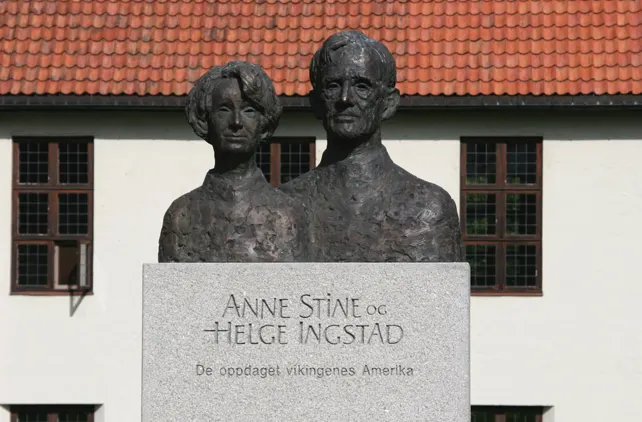

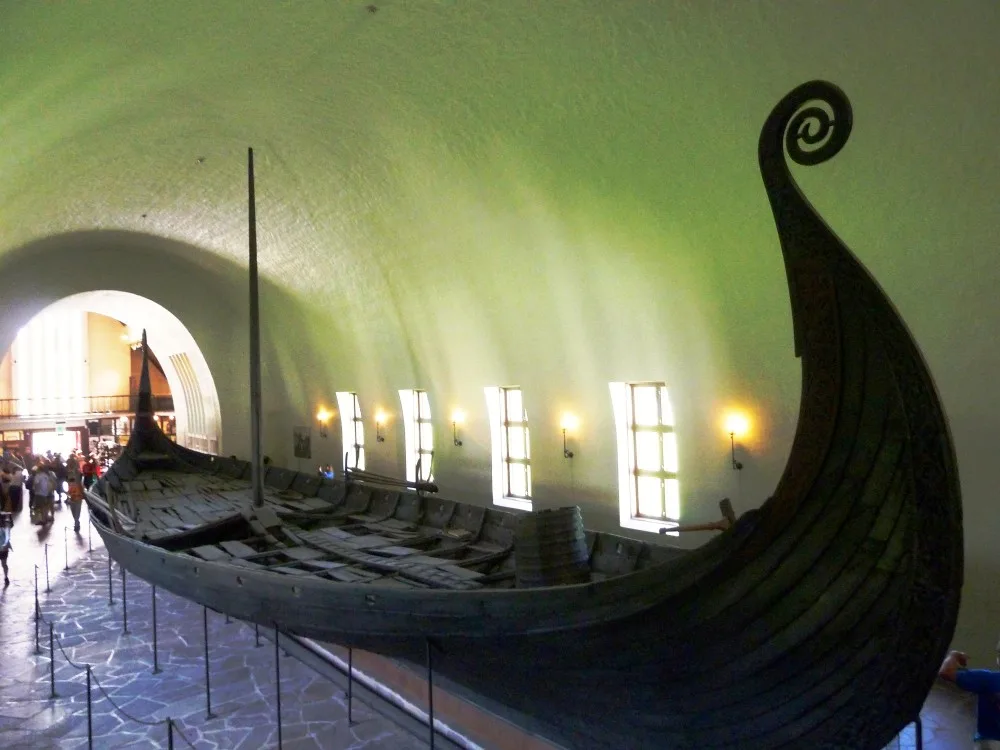




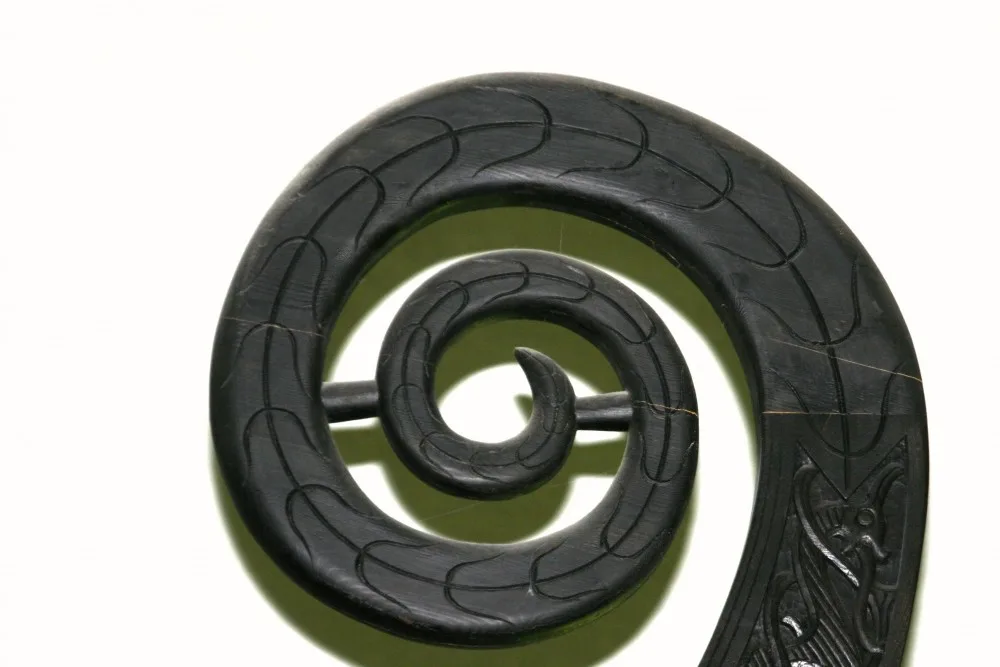




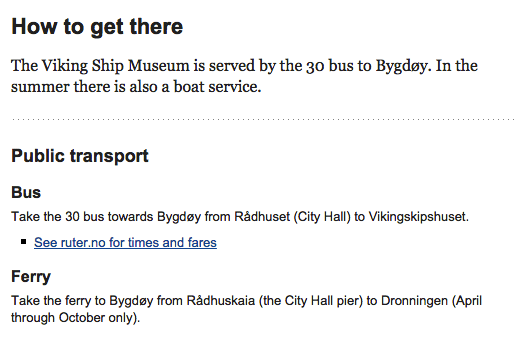



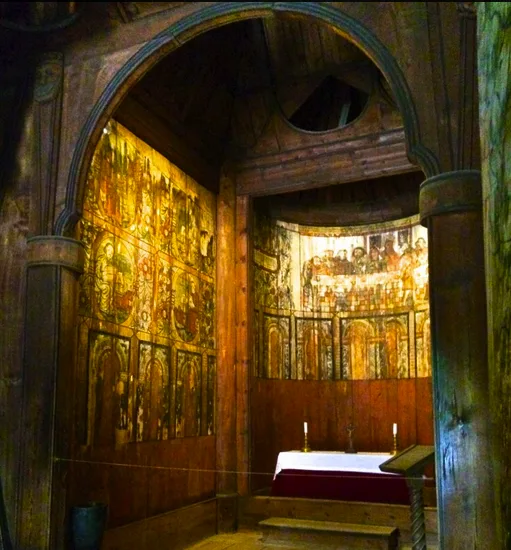

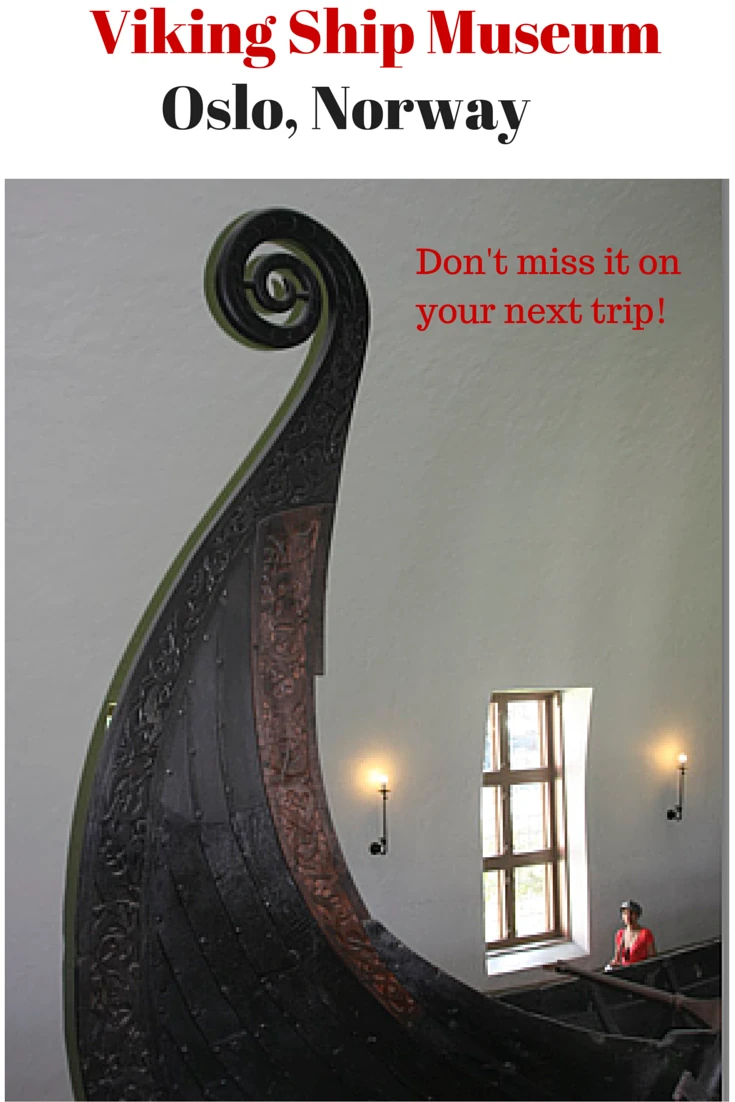

Erin Frith
Thursday 13th of August 2015
The Viking Ship Museum in Oslo is not over 1000 years old, as you state in your opening sentence. The museum was built in various stages between 1925 and 1957, making it a maximum of 90 years old.
The items housed in the museum are in the 1000-year-old range, but not the museum itself. I would hate for people to visit the museum, expecting to experience a 1000 year old building.
Cacinda Maloney
Thursday 13th of August 2015
Erin! Yes,thanks for reading! Yes, of course, the Museum is not over 1000 years old. The Viking Ship Museum, Oslo houses viking longships and artifacts that are over 1000 years old! I don't think anyone would be expecting a 1000 year old building.
Sherry -Viking Decedent
Sunday 9th of August 2015
I MUST visit there someday! I am a descendent of the Viking kings and queens. So far I have traced them back to the mid 500's
Thank you so much for sharing these wonderful photos!
Cacinda Maloney
Sunday 9th of August 2015
Oh wow! That is really awesome that you have traced your history! My grandmother was a genealogist back when there were no computers and traced our family back to the Ansley Family in England! I think it very interesting to learn your family history! And about the Viking Ship Museum, Oslo = it is fabulous! You will thoroughly enjoy it.
Suzanne Fluhr (Boomeresque)
Saturday 23rd of November 2013
Looking at how low the side of the ship is, it is hard to imagine these ships ranging fat and wide over the tempests of the northern sera, including the North Atlantic. I've been to Copenhagen and Helsinki. Oslo and Stockholm remain on my bucket list.
Cacinda Maloney
Sunday 24th of November 2013
I know, it is amazing that these viking longships were seaworthy. The Viking Ship Museum, Oslo is certainly worth a trip and it is a city that is easy to get around in, so I think you will enjoy it.
Kristin Henning
Tuesday 12th of November 2013
Thanks for adding this to the history link-up. Sounds amazing and I enjoyed your photos. I got to see the Canoe Museum in Ontario just after the TBEX conference in Toronto. Wonderful site for this part-Viking girl. - Kris
Cacinda Maloney
Wednesday 13th of November 2013
Totally worth a visit to Oslo, just to see this!! Loved it!
Cathy Sweeney
Tuesday 5th of November 2013
Those ships have always amazed me. Must have been quite a ride! I'd love to see them in person. Interesting history of Queen Asa and the royal family.
Cacinda Maloney
Tuesday 5th of November 2013
Yes Cathy, it is a must see while in Oslo, I loved it!